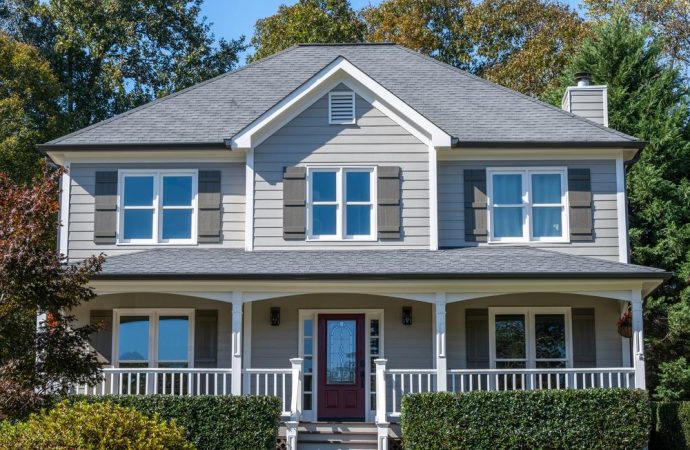Introduction In an era where wildfires are becoming increasingly prevalent and destructive, the quest for fire-resistant homes has gained momentum. But what’s truly achievable in home construction when it comes to resisting the ravages of fire? In this article, we will explore the remarkable achievements and possibilities in the realm of fire-resistant homes, demonstrating how
Introduction
In an era where wildfires are becoming increasingly prevalent and destructive, the quest for fire-resistant homes has gained momentum. But what’s truly achievable in home construction when it comes to resisting the ravages of fire? In this article, we will explore the remarkable achievements and possibilities in the realm of fire-resistant homes, demonstrating how technology and innovative design can make your home a safer haven in the face of wildfires.
The Imperative for Fire-Resistant Homes
Wildfires have wreaked havoc on homes and communities, underscoring the need for fire-resistant housing. Here’s why it’s imperative:
1. Safeguarding Lives
The primary goal of fire-resistant homes is to protect lives. These homes are designed to withstand wildfires, providing a secure refuge during a fire, and potentially saving lives.
2. Preserving Property
In addition to human safety, fire-resistant homes aim to safeguard property. They minimize damage, ensuring that your investment in your home remains intact, even in the face of a wildfire.
3. Environmental Responsibility
In regions prone to wildfires, the construction of fire-resistant homes is an environmentally responsible choice. By reducing the risk of wildfires, we can help protect natural habitats and decrease air pollution.
Achievements in Fire-Resistant Home Construction
The achievements in fire-resistant home construction are a testament to human innovation and resilience. Here are the key aspects that have made these homes a reality:
4. Fire-Resistant Materials
The choice of building materials is crucial in fire-resistant home construction. Modern advancements have led to the development of materials that are highly fire-resistant. These include non-combustible siding, fire-rated glass, and fire-resistant roofing materials. These materials slow down the spread of flames.
5. Ember-Resistant Features
Embers carried by the wind are a common ignition source during wildfires. Fire-resistant homes incorporate ember-resistant features such as ember-resistant vents, screens, and eaves. These features prevent embers from entering your home and igniting fires from within.
6. Smart Technology
Smart technology has found its place in fire-resistant home construction. Automated fire detection and suppression systems, smart ventilation solutions, and evacuation assistance are all integrated to enhance the safety and resilience of these homes.
7. Fire-Resistant Landscaping
The area surrounding the home plays a significant role in fire resistance. Fire-resistant landscaping involves planting fire-resistant vegetation, maintaining safe distances between trees and structures, and clearing dead vegetation to create a defensible space.

Image by: https://artsandcraftshomes.com/
Comparative Analysis: Fire-Resistant Homes vs. Conventional Homes
To understand the achievements in fire-resistant home construction, let’s compare them to conventional homes in terms of safety and resilience:
Fire-Resistant Homes
- Fire Resistance: High
- Protection: Excellent
- Valuable Preservation: High
- Environmental Responsibility: Yes
Conventional Homes
- Fire Resistance: Low
- Protection: Limited
- Valuable Preservation: Moderate
- Environmental Responsibility: No
Fire-resistant homes offer higher fire resistance, excellent protection, and better preservation of property, all while being environmentally responsible. In contrast, conventional homes have lower fire resistance, limited protection, and moderate preservation of property, with less environmental responsibility.
Mastering the Art of Fire-Resistant Living
After exploring the achievements and comparisons, it’s time to master the art of fire-resistant living. Here are some additional tips to help you succeed in making your home safer:
8. Regular Maintenance
Regular maintenance is vital to ensure all fire-resistant features and materials remain effective over time. Regular inspections and maintenance can make a significant difference.
9. Emergency Preparedness
Being prepared for emergencies, even in a fire-resistant home, is crucial. Create an emergency plan, assemble an emergency kit, and stay informed about local fire conditions.
Conclusion
The achievements in fire-resistant home construction are a testament to human innovation and determination. Protecting lives, preserving property, and promoting environmental responsibility are all attainable with fire-resistant homes. As you embark on the journey of fire-resistant living, remember the strategies outlined here and embrace the peace of mind that comes with knowing your home is a fortress of safety during wildfires. With determination and careful planning, you can master the art of fire-resistant living and make your home a safer haven in the face of the growing wildfire threat.

















Leave a Comment
Your email address will not be published. Required fields are marked with *